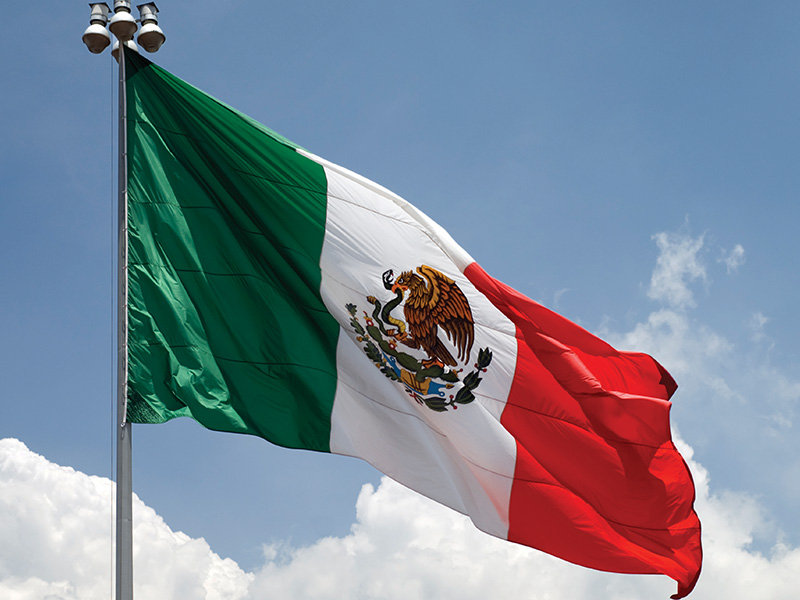
Earlier this year, Mexico’s senate approved the creation of a new pension fund to help provide more retirement security for low-income citizens.
The reform aims to ensure pensioners receive 100 per cent of their last monthly salary up to roughly 16,777 Mexican pesos (US$975), which is the average monthly wage for workers affiliated with the Mexican Social Security Institute.
“Congress approved this change to the pension system, which basically established a new welfare pension fund,” says Pedro Trejo, retirement director at WTW Mexico. “The fund was created to help employees with their retirement savings and the general population that’s involved in the social security system will get the benefit. That means more than 80 per cent of the population in Mexico could benefit from this reform.”
Read: Savings incentives at 7-Eleven among ways to boost Mexico’s retirement outcomes
The new reform is complementary to pensions generated by individuals’ social security defined contribution accounts, which are managed by private fund administrators (AFOREs), a program that was established in 1992.
The accounts, which consist of two sub-accounts for retirement and housing, receive employer contributions of two per cent and five per cent, respectively, of a worker’s salary. “So this is like a second stage of the reform,” says Trejo. “The difference with the last [stage] is the additional contributions were financed by the employers, while this one will be financed strictly by the government. It’s very good news for anyone who retires at 65 to have a monthly pension amount of at least 100 per cent of their final salary.”
By the numbers
• In 2021, 6 out of 10 Mexicans were saving, either in an account or through informal means. Among those who saved in a bank account, only 2.5% did so for old age or retirement.
• While 39.1% of the population between the ages of 18 and 70 had a retirement account or AFORE in 2021, 3% of adults (2.5 million people) didn’t know if they had a retirement account.
• 92.5% of adults understood the concept of simple interest, but this percentage dropped to 36.3% when evaluating the concept of compound interest, the basis for valuing long-term investments.
Source: BBVA report, 2023
The fact that Mexico’s public pension system used to be managed by private companies raises the possibility of conflicts of interest, says Scott Anderson, regional vice-president of employee benefits at Hub International Ltd., who isn’t an expert on Mexico’s pension system.
“When you have billions of dollars under management, there should be strict oversight . . . . It sounds like this reform will help to ensure proper management of retirement funds, [while supporting Mexicans’ retirement security].”
Read: Income inequality reducing retirement security in U.S.: report
The reform is also an important measure to be more inclusive, he adds, as it aims to help workers who fall on the lower end of the wage scale, which is a large part of the Mexican population.
Building the funds
The welfare pension fund starts with around 40 billion Mexican pesos (US$2.32 billion) in unclaimed savings held by workers aged 70 and older in inactive accounts with AFOREs.
However, there are some concerns about funding, notes Trejo. “There’s likely an over-expectation of the level of profits all these projects will generate in the near future. As of right now, none of these projects are generating profits, but of course they’re expected to in the future. The government committed to this fund as of July 1, so it’s already paying these top-ups.”
Indeed, the pension top-ups will initially be financed by the sale of certain state assets and by various other state resources, he adds, so there won’t be any additional employer or employee contributions.
Read: DC plan members nearing retirement need employers’ help to achieve financial security: report
Since the new measure is funded by the government, employers are unlikely to see any impacts, he adds. “[This reform] is a complement of what people are going to receive at retirement from social security, so there shouldn’t be any modifications or reductions. I believe employers will continue to offer their pension plans since they can help companies to attract and retain talent.”
The Canadian perspective
In comparing the reform to the Canadian retirement system, Anderson believes Mexico is on the right track to creating similar support for its retirees.
“The last few changes to the [Canada Pension Plan] were to keep it more sustainable for more people. I know we have to make more contributions, but the intent is that younger people will have more income coming from the CPP at retirement.”
While Trejo isn’t as familiar with the Canadian system, Mexico’s reference on pensions has always been based on Chile’s experience. In 1981, Chile created individual retirement accounts in which the government, employers and workers put money, a reform that likely inspired Mexico’s recent changes. “I would say it’s important for any government to make sure these guarantees as part of a reform are well-financed. They need to compile a set of strategies to ensure their pension fund will be sufficient for the coming years, as more people are nearing retirement.”
Sadie Janes is an associate editor at Benefits Canada and the Canadian Investment Review.
